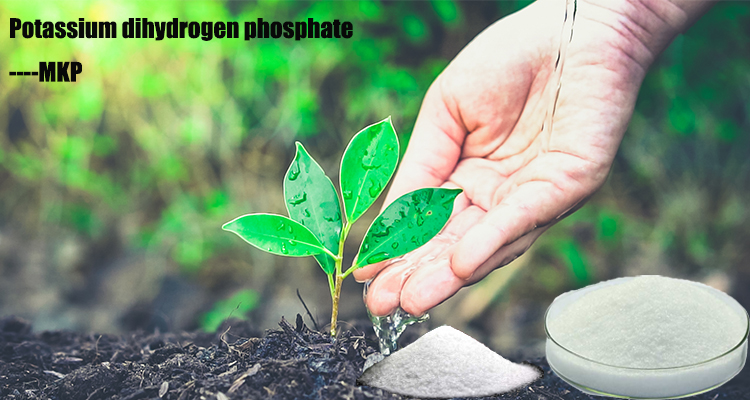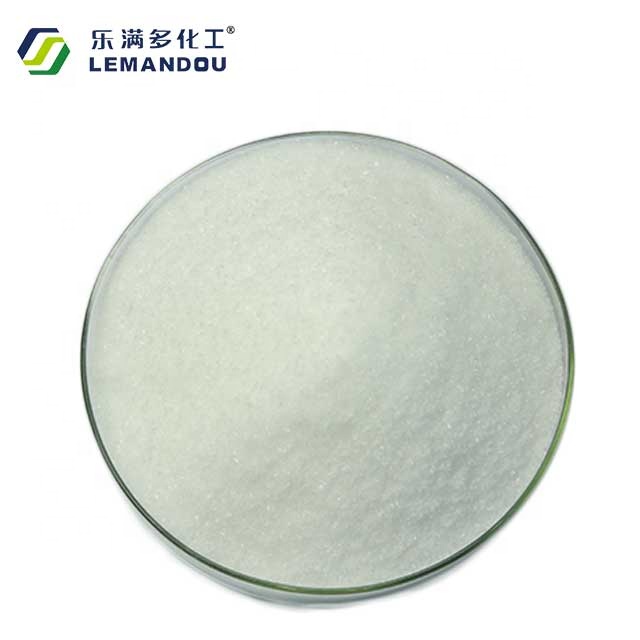Physical Properties Potassium dihydrogen phosphate (chemical formula KH2PO4) is a high concentration phosphorus, potassium complex fertilizer, P2O5 content of 52%, K20 content of 34%. Small hygroscopicity, good physical properties, easy to dissolve in water, at 20℃ per 100 ml of water can be dissolved 23g, the aqueous solution is acidic. Potassium dihydrogen phosphate is a kind of phosphorus and potassium containing two elements of efficient and instant phosphorus potassium complex fertilizer Chemicalbook, used to provide nutrients needed for plant growth and development, suitable for any soil and crops, especially for phosphorus and potassium nutrient deficiency areas and phosphorus and potassium crops, mostly used for external topdressing, seed soaking, seed dressing. If it is used as root fertilizer, it can be used as base fertilizer, seed fertilizer or middle and late topdressing fertilizer. The aqueous solution can react with silver nitrate to produce yellow silver dihydrogen phosphate precipitation, which can be used as a differential reaction. Because potassium dihydrogen phosphate is more expensive and agricultural products are produced less, it is often used by soaking seeds or topdressing outside the roots. The concentration of field crops is commonly 0.2%, soaked for 18 to 20h, and can be sown after drying. For external topdressing, if sprayed alone, the maximum concentration can be 0.5%. For example, in the jointing booting period of wheat and rice, the first flowering period of cotton and rape can be sprayed 1 to 2 times. When spraying 2 times, the interval is about 7 to 10 days, and the amount of liquid used per mu is about 100 to 150kg. It can also be combined with other nutrients to form compound nutrient solution for external topdressing. For example, a variety of leaf fertilizers used in field crops in North China are mainly composed of potassium dihydrogen phosphate, urea and some trace elements. In recent years, potassium dihydrogen phosphate (KDP) has been used as a kind of phosphate and potassium fertilizer source with high concentration and good hydrophilicity. With the development of facility horticultural crops, drip irrigation and fertilizer irrigation, the demand for potassium dihydrogen phosphate products is increasing. The role of potassium dihydrogen phosphate 1, promote nitrogen and phosphorus absorption. Potassium dihydrogen phosphate can promote the absorption of nitrogen and phosphorus by crops, quickly supplement phosphorus, improve crop yield and 1000-grain weight, and play a special role in the special physiological period of crops. 2. Promote photosynthesis. Potassium in crop growth plays a role in enhancing crop photosynthesis, accelerating the production and conversion of nutrients. 3, improve crop resistance. Potassium dihydrogen phosphate can improve the resistance of crops, such as drought resistance, dry heat resistance, waterlogging resistance, freezing resistance, damage and healing resistance, resistance to bacterial infection and so on. 4. Improve fruit quality. Spraying during fruit expansion period can protect fruit and strengthen fruit, promote fruit expansion, improve fruit quality, increase color and improve taste. 5, regulate the balanced growth of crops. Dichemicalbook potassium hydrogen phosphate has the function of regulator, which can promote flower bud differentiation, increase the number of flowers, strengthen the bud, strengthen the fruit, improve the fruit set, and effectively promote the growth and development of roots. The nutrient composition of high purity potassium dihydrogen phosphate is 52% phosphorus and 34% potassium. Phosphorus has a significant effect on the growth of roots, stems and skins of crops, and also has an obvious effect on enhancing disease resistance, cold resistance and waterlogging resistance of crops. Potassium has significant effects on improving crop yield, increasing fruit quality and increasing sugar content. There are several key periods when potassium dihydrogen phosphate is used. The first is the flower bud differentiation stage. The flower bud differentiation stage has a relatively large demand for phosphorus, and phosphorus has a very good effect on improving the flowering and fruit setting rate of crops and reducing the fall of flowers and fruits. Therefore, spraying 500 times potassium dihydrogen phosphate solution on the leaf surface of flower bud differentiation can achieve twice the result with half the effort. The second is the rising stage and we all know that the expanding stage of the fruit is the time when potassium is most needed. Potassium is irreplaceable for seed formation and fruit expansion, and crops are most sensitive to potassium at this time. In this period, the effect of root or leaf spraying is the most obvious. When spraying 500 times potassium dihydrogen phosphate liquid on the leaf surface, it can be mixed with 200 times glucose liquid and 1000 times urea liquid, which can achieve twice the effect with half the effort. Third, fruit coloring is the process of anthocyanin formation, and the formation of anthocyanin is directly related to the sugar content and sunlight, and the formation of sugars is greatly affected by potassium. Therefore, the action process of potassium element plays a very key role in fruit coloring. Therefore, the effect of spraying potassium dihydrogen phosphate 300-500 times liquid on the early leaf surface of fruit coloring is twice as effective.
Post time: Jul-22-2024







